Cyathus wenshanensis
MycoBank number: MB 844702; Index Fungorum number: IF 844702; Facesoffungi number: FoF 12564;
Description
Basidiomata obconical to cupulate, 5–15 mm in height, 5–10 mm in width at the mouth, without expanding at the top or tapering abruptly at the base; the base usually attached to the substrate by a slightly conspicuous emplacement, brown to beige; exoperidium brown, hirsute, external wall striate near the mouth, 0.4–0.7 mm between folds, covered with brown to dark brown, irregular and flexible tufts of hair; hair hyphae with clamp connections, colorless, thick-walled (wall up to 0.5–2 μm thick), 3.5–13.5 µm in diameter; endoperidium greyish brown to black brown, conspicuously striate with 0.4–0.8 mm between the groves; mouth finely fimbriate; peridium walls consist of three different layers: (1) outer wall layer, hyphal system trimitic, CB–, IKI–, tissues unchanged in KOH; generative hyphae with clamp connections, colorless to pale brown, slight thick-walled, frequently branched, 1.5–4 µm in diameter; skeletal hyphae colorless to pale brown, thick-walled, unbranched, 2–4 µm in diameter; binding hyphae colorless to pale brown, thick-walled, unbranched, 1.5–2.5 µm in diameter; (2) inner wall layer, hyphal system trimitic, CB–, IKI–, tissues unchanged in KOH; generative hyphae with clamp connections, colorless to pale brown, slight thick-walled, rarely branched, 2–4 µm in diameter; skeletal hyphae colorless to pale brown, thick-walled, unbranched, 2.5–4.5 µm in diameter; binding hyphae colorless to pale brown, thick-walled, rarely branched, 1.5–3 µm in diameter; (3) pseudopare-chymatous layer.
Peridioles depressed, shiny, angular to irregular, suborbicular, broadly ellipsoid to ovoid, dark grey to black, surface smooth to wrinkled, tunica present, often inconspicuous, cortex single-layered, 2.5–3.5 × 2–3 mm; funicular cord present, funiculus hyphae with clamp connections, thick-walled, unbranched, pale yellowish, 1–3.5 µm in diameter; hyphal system of peridiole middle dimitic, generative hyphae with clamp connections, colorless, thin-walled, frequently branched, with oil drops inside, 1–3 µm in diameter, CB–, IKI–, tissues unchanged in KOH; skeletal hyphae colorless, slight thick-walled, unbranched, with oil drops inside, 1.5–4 µm in diameter, CB–, IKI–, tissues unchanged in KOH.
Basidiospores subglobose, elliptical to ellipsoid-elongate, colorless, smooth, thick-walled (wall up to 1–5 μm thick), CB–, IKI–, with inclusions or oil-like globule, without apiculus, (10–)11–21(–22) × 9–14(–15) µm, L = 16.34 µm, W = 11.51 µm, Q = 1.4 (n = 60/1). Basidia not observed.
Material examined: China. Yunnan Province, Wenshan, Pingba Town, Huguangqing Village, 23.26°N, 104.06°E, on the fallen branch of angiosperm, 12 August 2020, collected by C.L. Zhao. Specimen voucher number: (CLZhao 20202 (SWFC 020202), neotype).
Distribution: Thus far known only from China.
Sequence data: ITS: ON795104.1 (ITS5/ITS4)
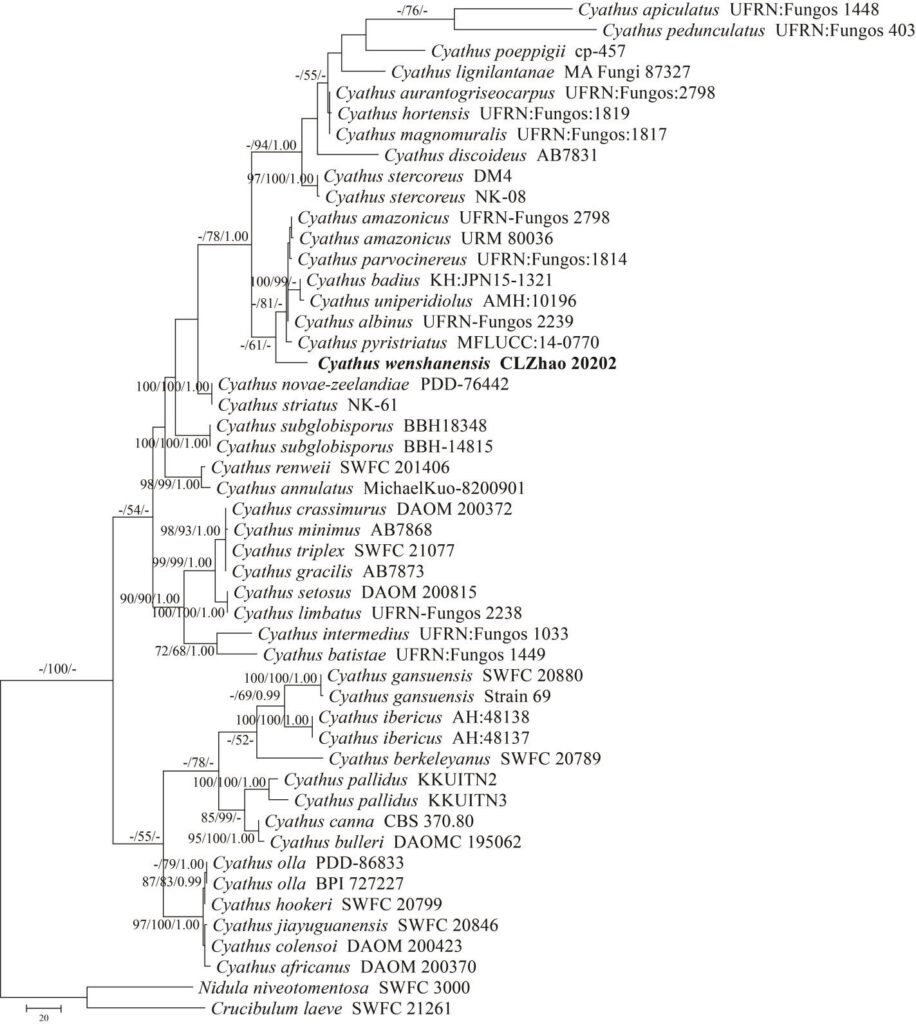
Fig. 1. Maximum parsimony strict consensus tree illustrating the phylogeny of the new species and related species in genus Cyathus based on ITS sequences. Branches are labelled with maximum likelihood bootstrap value >70%, parsimony bootstrap value >50% and Bayesian posterior probabilities >0.95, respectively. The present species were bold.
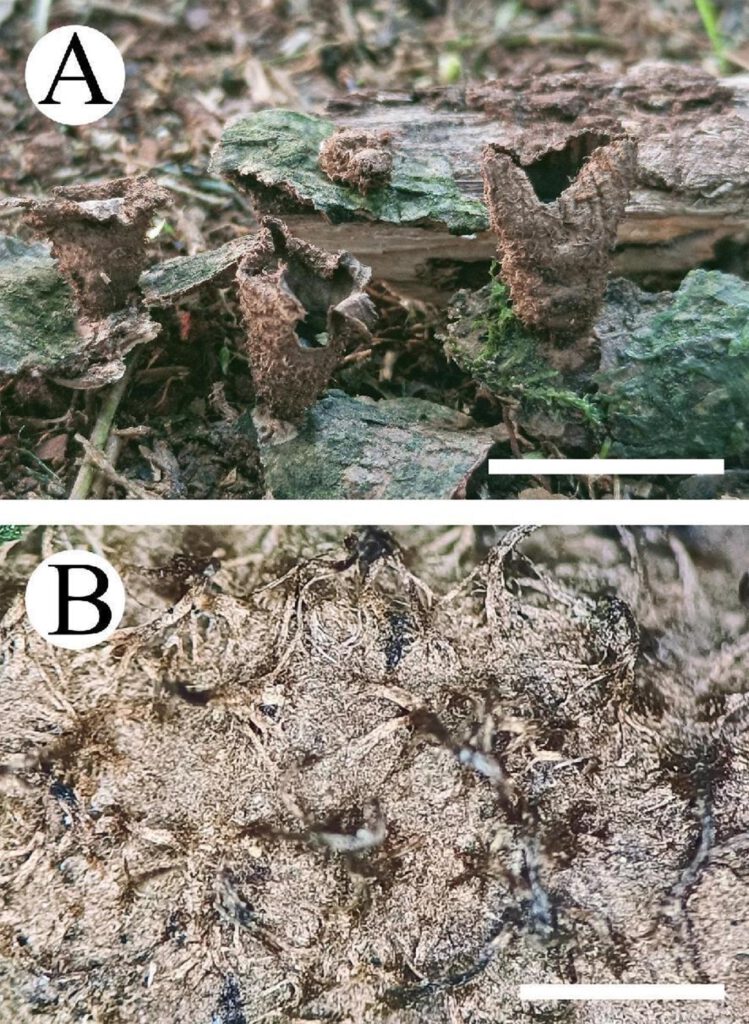
Fig. 2. Basidiomata of Cyathus wenshanensis (neotype). A Basidiomata. B Outer corving of peridium. Scale bears: A=1 cm, B=1 mm
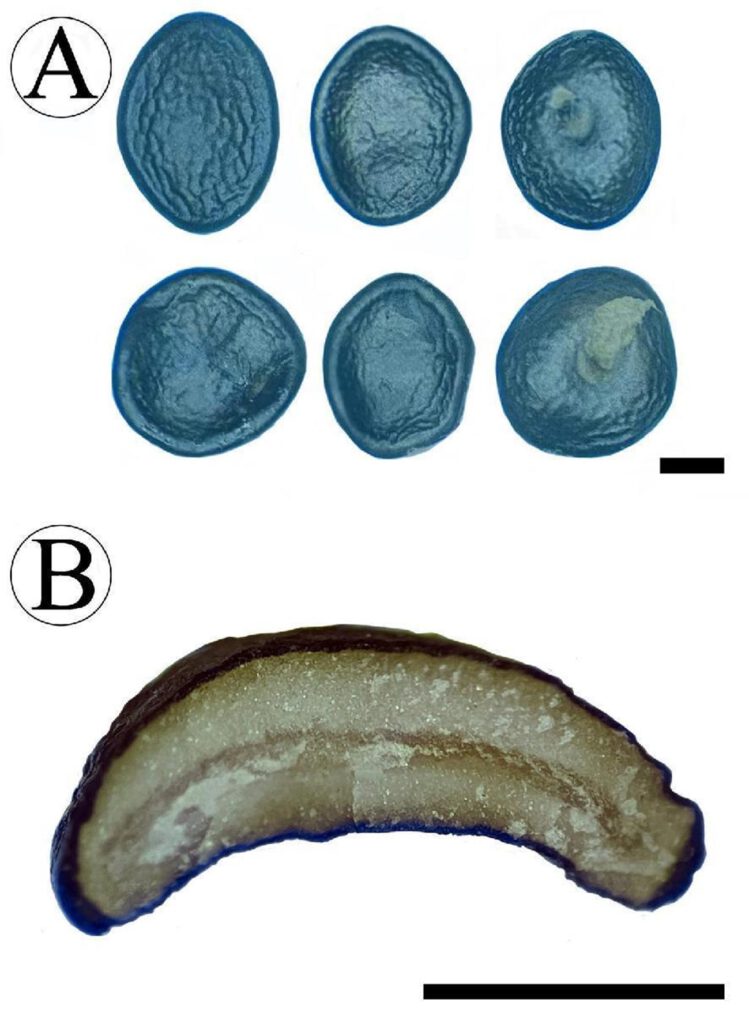
Fig. 3. Peridiole of Cyathus wenshanensis (neotype). A Peridioles with funicular cord. B Transversal section of peridiole showing single-layered cortex. Scale bears: A=1 mm, B=1 mm.
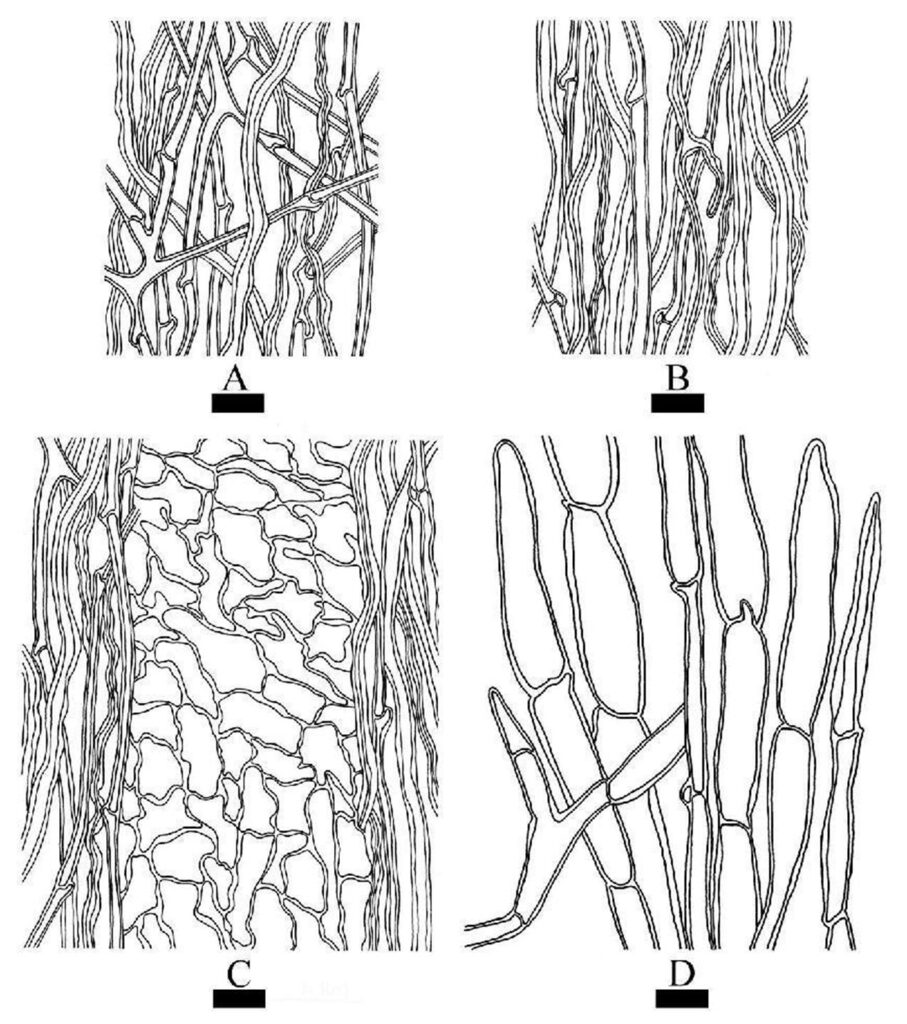
Fig. 4. Microscopic structures of Cyathus wenshanensis (neotype). A Outer wall of peridium. B Inner wall of peridium. C Three-layered peridium. D The structure of the hair. Scale bears: A–D=10 μm.
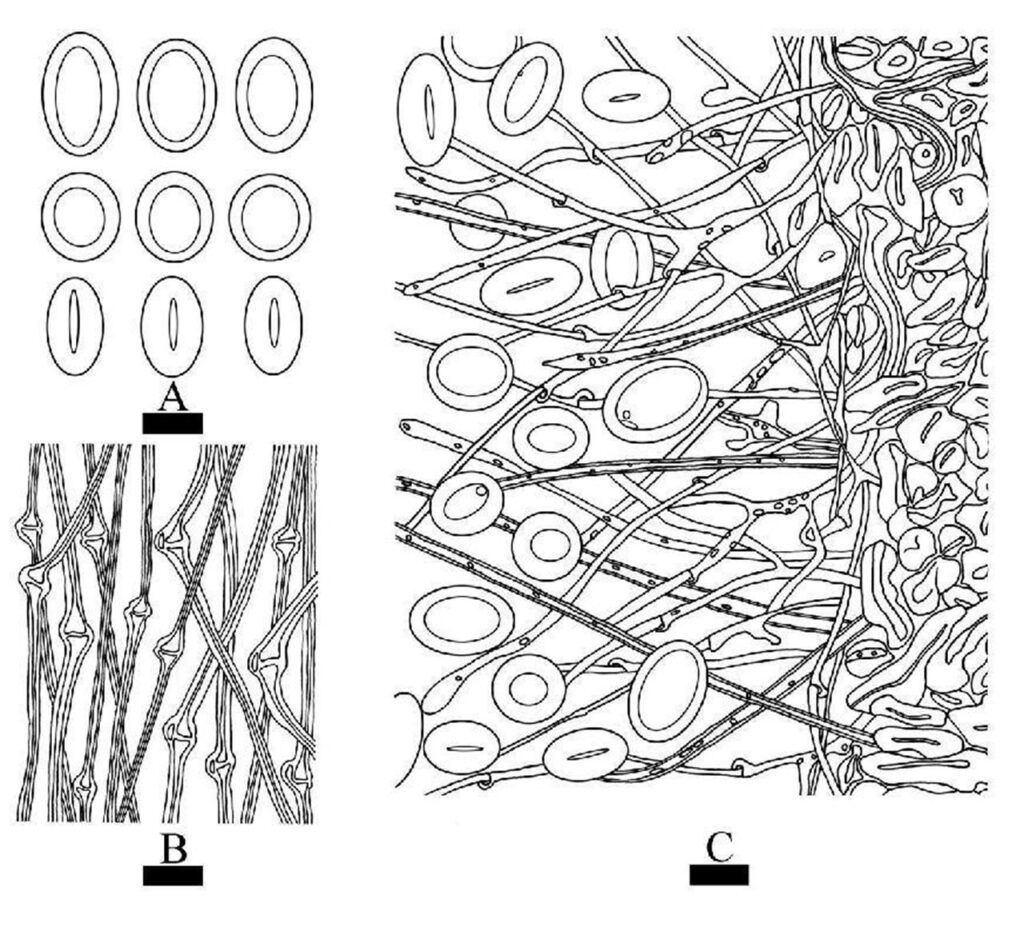
Fig. 5. Microscopic structures of Cyathus wenshanensis (neotype). A Basidiospores. B Funicular cord. C The internal structure of peridiole. Scale bears: A–C=10 μm.
